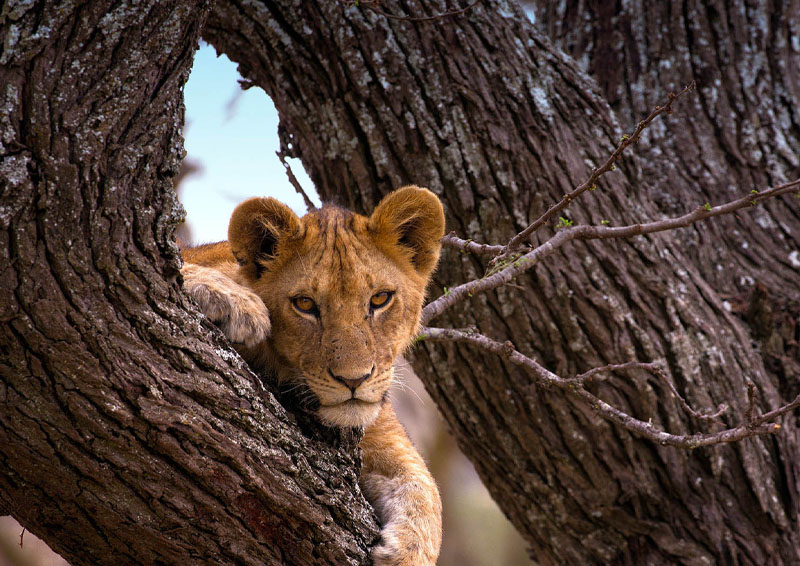Lake Manyara National Park
Lake Manyara National Park: A Jewel of Diversity
Lake Manyara National Park, located in the northern part of Tanzania, is one of the country’s most diverse and picturesque national parks. Covering an area of about 330 square kilometers (127 square miles), the park is renowned for its stunning landscapes, diverse wildlife, and the remarkable saltwater Lake Manyara that dominates the park’s ecosystem. The park is often considered a hidden gem for wildlife enthusiasts and photographers, offering an intimate safari experience with a wide range of ecosystems and species.
Wildlife and Biodiversity
Lake Manyara National Park is famous for its extraordinary diversity of wildlife, making it one of Tanzania’s most biologically rich areas. It is particularly known for its tree-climbing lions, a rare behavior that has fascinated visitors for years. While lions are often found lounging in the branches of acacia trees, the park also harbors large populations of elephants, buffalo, giraffes, zebras, and wildebeests. The park is home to more than 400 bird species, including flamingos, pelicans, and the endangered grey crowned crane, making it a paradise for birdwatchers.
The park is also a haven for primates, with large troops of baboons and the occasional sighting of monkeys, such as the blue monkey and vervet monkey. In addition, the park’s diverse ecosystems, ranging from the soda lake to the dense forests, attract a variety of other species, including hippos, crocodiles, and an array of smaller mammals and reptiles.
Geography and Climate
Lake Manyara National Park is located along the Great Rift Valley, with the dramatic escarpment of the valley providing a stunning backdrop to the park’s landscapes. The park is home to a unique mix of ecosystems, including the alkaline waters of Lake Manyara, lush groundwater forests, savanna woodlands, and open grasslands. The park’s diverse topography, including the towering cliffs of the Rift Valley and the wide floodplains of the lake, make it one of the most scenic parks in Tanzania.
The climate in Lake Manyara National Park is typically warm, with two rainy seasons: the short rains from November to December and the long rains from March to May. The best time to visit the park is during the dry season, from June to October, when wildlife is more concentrated around the lake and other water sources, making for easier sightings.
Tourism and Activities
Visitors to Lake Manyara National Park can enjoy a variety of activities that allow them to explore the park’s natural beauty and wildlife:
- Game drives: The park offers both morning and afternoon safari drives, providing an opportunity to see a wide range of animals in different habitats, from the forest to the lake’s shoreline.
- Birdwatching: With over 400 bird species, Lake Manyara is a dream destination for bird enthusiasts. The park’s birdlife includes large flocks of flamingos that gather along the shores of the lake, as well as pelicans, storks, and other waterfowl.
- Cultural visits: Visitors can interact with local communities such as the Maasai and visit nearby villages to learn about their traditions and way of life.
- Walking safaris: For a more immersive experience, walking safaris with a guide offer visitors the chance to explore the park on foot and learn about the smaller creatures and ecosystems often missed during a vehicle safari.
Conservation and Protection
Lake Manyara National Park, established in 1960, plays a significant role in conservation efforts in Tanzania. The park is managed by the Tanzania National Parks Authority (TANAPA), and efforts are focused on maintaining its unique biodiversity while mitigating threats such as poaching, human-wildlife conflict, and habitat destruction. The park’s remote location, combined with its relatively small size, allows it to retain much of its pristine nature, and ongoing conservation initiatives ensure that the wildlife and ecosystems are protected for future generations.





